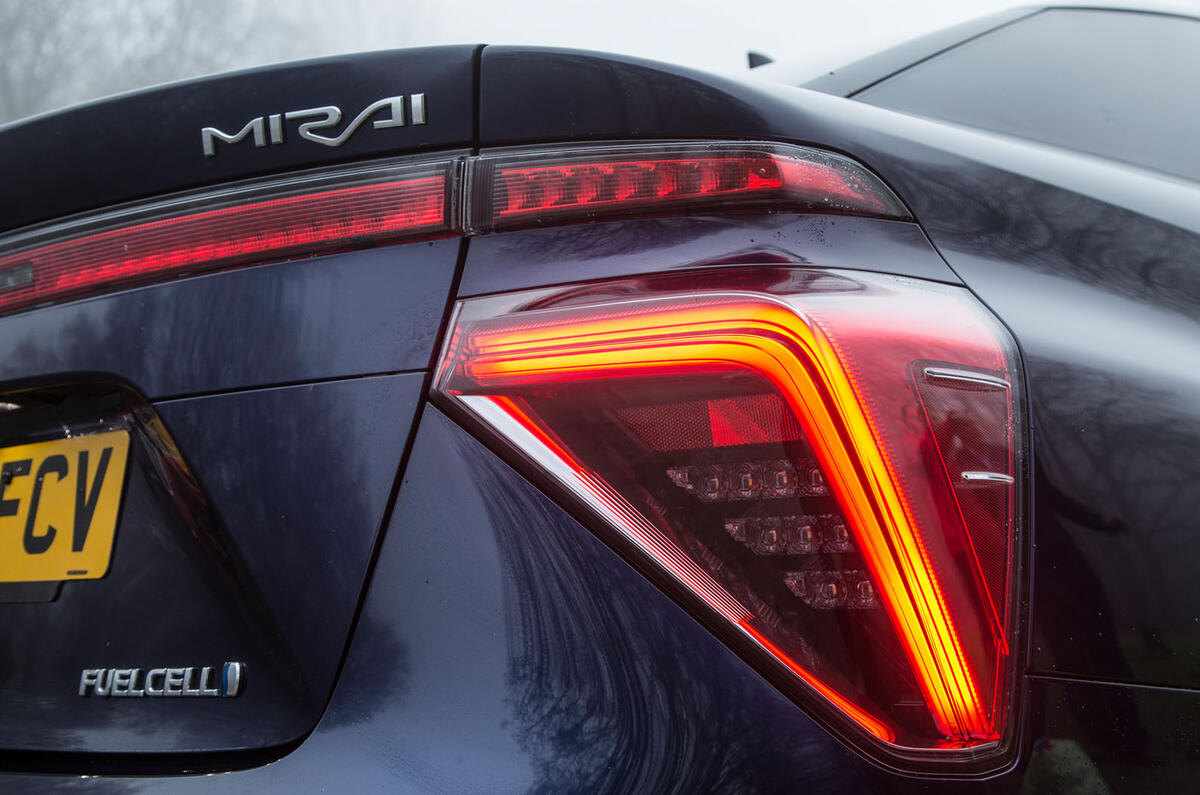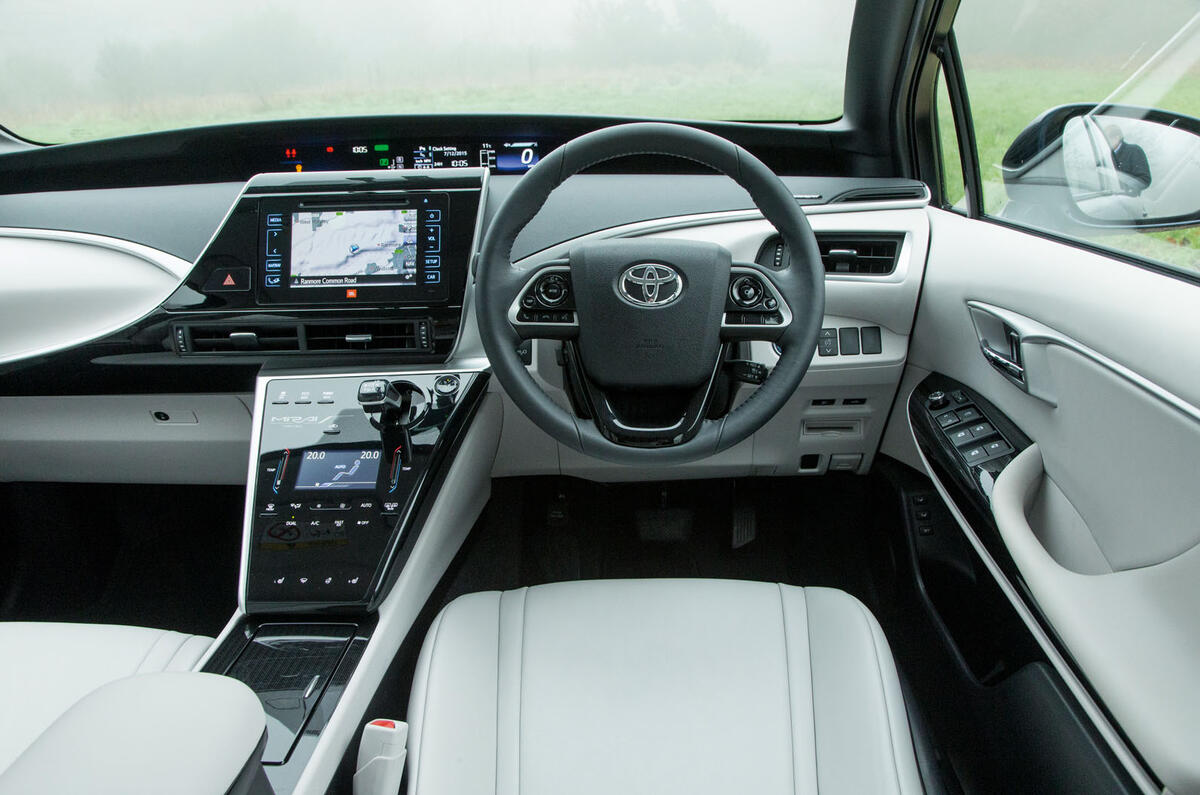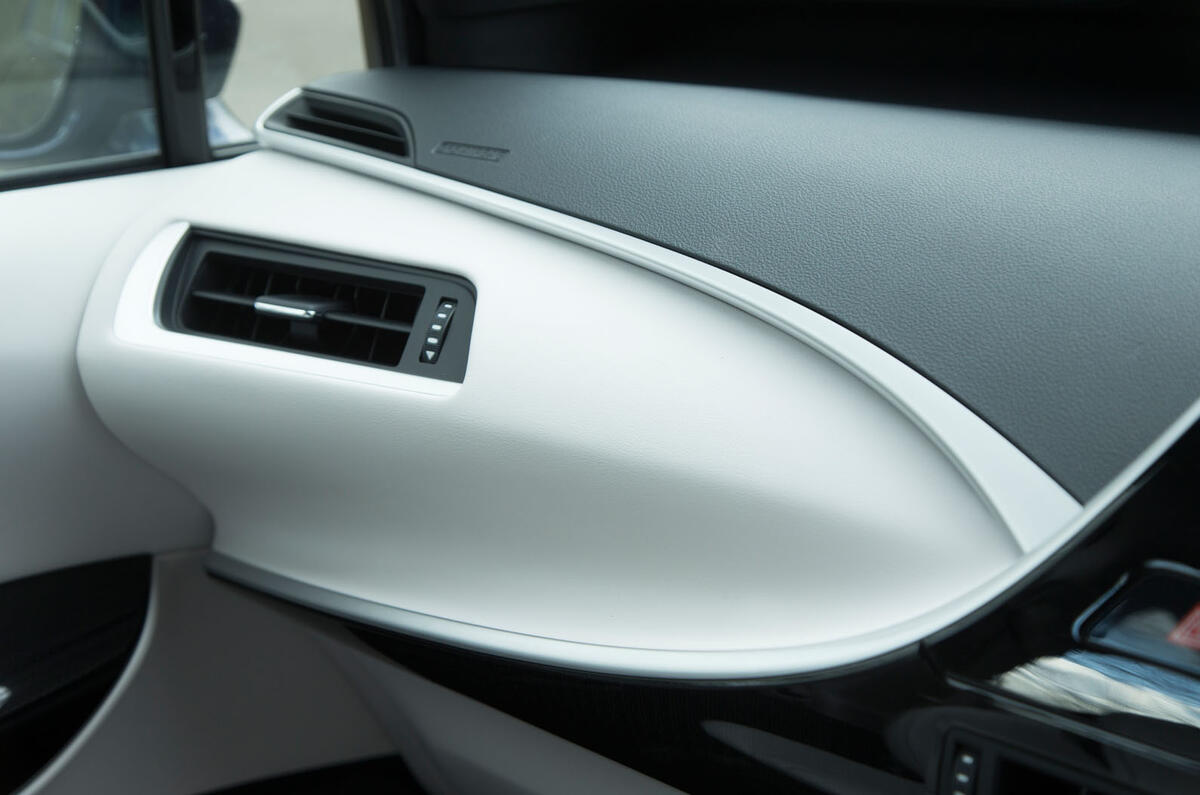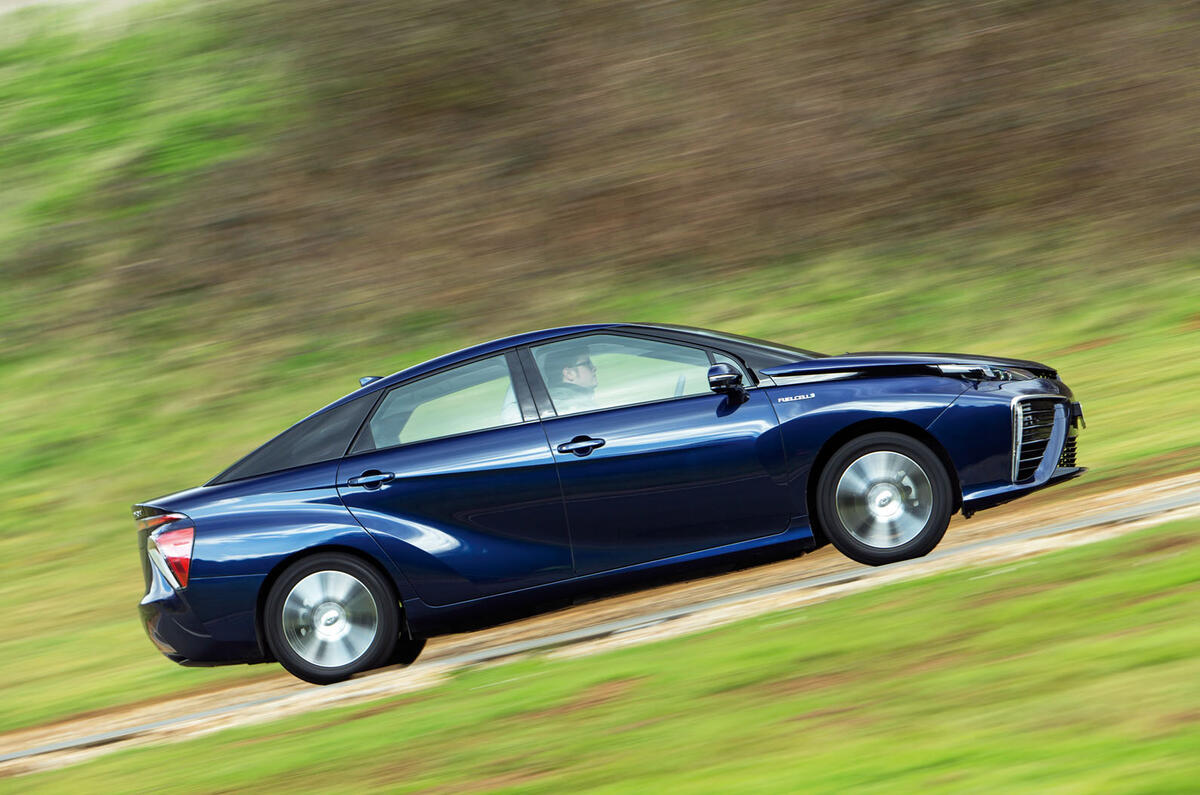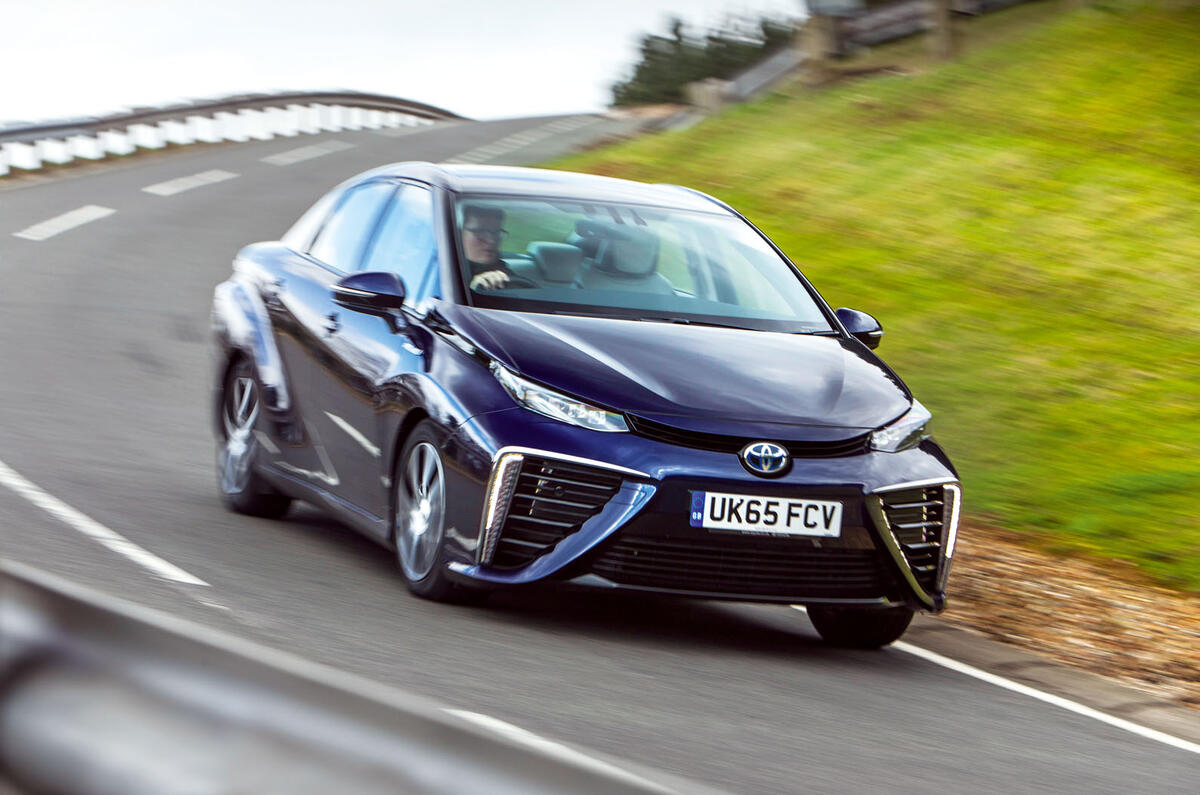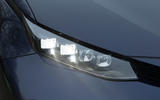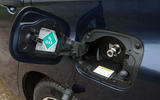From inside, it’s no surprise to learn that people have queried Toyota’s decision not to badge the Mirai as a Lexus.
The interior is a cut above most other Toyotas in tactility and finish, presumably to help it to fill out the comparatively vast price tag. And while it doesn’t preclude the use of a shiny plastic fascia, in other areas the cabin is agreeably soft to the touch.
Toyota has taken to heart the idea that it can make a hydrogen fuel cell fit a modest-sized, practical car, and the Mirai comes across as a right-sized solution.
Visibility is hindered a little by the double-storey dashboard, which incorporates twin information displays, but otherwise the cabin is as roomy as you’d expect a small saloon’s to be.
It won’t win awards for spaciousness in the back, but the fact that it fairly comfortably seats two medium-size adults despite all the gubbins required underneath is something of a triumph.
You probably wouldn’t realise that Toyota has had to find room for a fuel cell stack and two hydrogen tanks until you looked in the boot. Even here there is a serviceable 361 litres, but the foreshortened length (compared with what you’d find in a conventionally powered car) is a fair indication that load space has been sacrificed.
While this has some impact on usability, it hardly detracts from the base-level delivery of a usable and rather pleasant interior.
There are several infotainment displays in the Mirai. The upper ones that crown the fascia give you detailed information about the state of the hybrid drive battery and the source of the power that’s driving the car at any point, while the trip computer is the same as the one you’ll find in the new Toyota Prius.
It’s pleasingly detailed, giving you a fuel economy diary running months into the past, should you really want it. You control it using the thumb consoles on the steering wheel, and the menu scrolling logic is intuitive enough.
The car gets Toyota’s Touch 2 with Go Plus multimedia and satellite navigation, working through a 7.0in VGA touchscreen display and paired with an 11-speaker JBL premium hi-fi with DAB tuner.
The touchscreen interface wouldn’t be considered the most responsive or graphically appealing on a £25,000 car, so needless to say it doesn’t do many favours to the £66,000 Mirai, either.
The navigation map display is only averagely well detailed, while the audio quality is good but not brilliant.
Like the Prius, the Mirai comes with a wireless charger for Qi-compatible smartphones, and it is to be found under the armrest.












